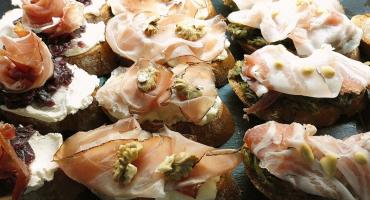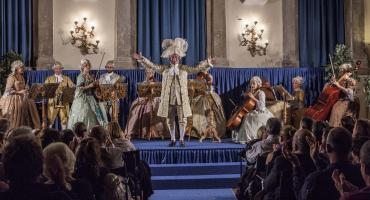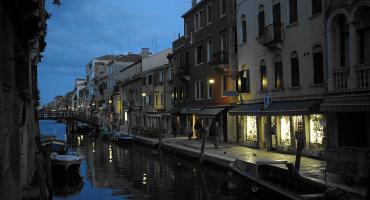A little dictionary of useful Venetian terms to help you get around the idiosyncratic city of Venice.
Motonave: A motorship, the largest boat used for public transport in the lagoon. Considering its tonnage and capacity (1,000-1,200 passengers), it is normally used for the most popular routes and along the deeper canals - e.g. between St Mark's and the Lido, from Venice to Punta Sabbioni and between islands.
Murrina: This is a very old glass-making technique, used to produce multi-coloured glass "weaves". Small glass tesserae of different colours are laid side-by-side and then placed in a furnace, where they are fused together. The ensuing glass can then be blown to form the most varied objects, including vases.
Ombra: Literally "shade" or "shadow", but most certainly not of the Chinese variety and not what you'd expect to see projecting from an illuminated object. In Venetian, the term is used to indicate a glass of white or red wine, which the locals love to sip in the innumerable bacari and osterie throughout the city. They are called ombre because, in the past, Venetians used to sit in the shadow of the Campanile in St Mark's Square and drink their wine.
Osteria: This is the name given to popular, lower-class Venetian restaurants. Once they were all rather cheap and frequented almost exclusively by locals; now some are incredibly exclusive, and cater to an international clientele.
Peoci: The Venetian term for mussels. This is perhaps the most common and popular seafood in the city. Extraordinarily delicious sautéed, they are equally as delicious when used to make a spaghetti sauce (in fact, they're just as good as their rather more aristocratic, and expensive, counterpart, the clam).
Pope!: This is the name given to the oarsman who stands at the rear of the gondola and "guides" it. But it is also the word bawled out by gondoliers as they approach a turn or "crossroads" along the canals as a warning to any on-coming traffic.
Rio terà: This term is used to describe any rio (canal) subsequently filled in and turned into a street. The most famous rii terà are Rio Terà de la Maddalena (Cannaregio), and Rio Terà de la Carità (Dorsoduro), near the Accademia Gallery.
Saòr: A Venetian term meaning "flavour". It is used to describe a special type of marinade used for fish dishes. Perhaps the most famous dish is sarde in saòr, which consists of small fried sardines marinated in a mixture of onions, vinegar and pine nuts - a real Venetian delicacy that should be savoured along with an ombra of very good wine.
Sirens: There are 16 sirens throughout the city and the islands, used by the city's Tides Office to warn of imminent flooding. The sirens are sounded about 3 to 4 hours before a very high tide (i.e. more than 1.1 metres) reaches its peak. The sirens are obviously important for everyone, but particularly for anyone living on the ground floor and for shopkeepers.
Squeri: Partly covered areas where gondolas and other typically Venetian boats were once built or repaired. One of the oldest squeri (which is still building and repairing gondolas) can be found at San Trovaso, near the Zattere.
Vaporetto: This is the Venetian "bus", a public transport boat that ferries you up and down the Grand Canal and other major water-ways both within and around the city.



